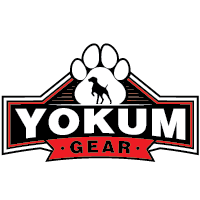Toilet training a dog can be a challenging yet rewarding experience. Whether you have a new puppy or an older dog that needs to learn proper bathroom habits, a structured and consistent approach is key. Implementing effective strategies can ease the process significantly and help in establishing long-lasting habits. Here are some tried-and-true tips for successful dog toilet training.
1. Start Early and Be Consistent
The earlier you start toilet training, the better. The ideal time to begin is when your puppy is between 12 to 16 weeks old. Begin by setting a consistent schedule for bathroom breaks. Take your dog out first thing in the morning, after meals, before bedtime, and at regular intervals throughout the day. Consistency helps establish a routine, making it easier for your dog to understand when and where they should relieve themselves.
2. Choose a Designated Bathroom Spot
Select a specific area outside where you want your dog to do their business. Always take your dog to this spot during bathroom breaks. The familiar scent will prompt them to go. Using commands like go potty or do your business at this spot can also reinforce the behavior.
3. Supervise and Confine
When toilet training a puppy, supervision is crucial. Keep a close eye on your dog, especially during the initial stages. If you can't supervise, consider using a crate or a designated confinement area. Dogs naturally avoid soiling their sleeping areas, so confinement can help encourage them to hold it until you take them outside.
4. Use Positive Reinforcement
Positive reinforcement is one of the most effective training techniques. Every time your dog successfully goes to the bathroom outside, reward them with praise, treats, or playtime. This creates a positive association with the desired behavior, encouraging your dog to repeat it.
5. Watch for Signs
Learn to recognize signs that your dog needs to go out. Common indicators include sniffing the ground, circling, whining, or scratching at the door. When you observe these behaviors, quickly take your dog outside to their designated bathroom spot to prevent accidents.
6. Clean Up Accidents Thoroughly
Accidents are bound to happen during the training process. When they do, clean them up immediately and thoroughly using an enzymatic cleaner to remove all traces of the scent. This helps prevent your dog from being drawn back to the same spot to relieve themselves again.
7. Be Patient and Avoid Punishment
Toilet training takes time and patience. Scolding or punishing your dog for accidents can create fear and anxiety, leading to more problems. Instead, focus on reinforcing positive behaviors and be patient. Consistency and understanding are key to successful training.
8. Set a Feeding Schedule
Establishing a regular feeding schedule can make predicting bathroom times easier. Feed your dog at the same times each day and take them out shortly after meals. This consistency helps regulate their bathroom schedule and reduces the chances of accidents.
9. Consider Crate Training
Crate training can be a valuable tool in toilet training. Ensure the crate is the right size—large enough for your dog to stand, turn around, and lie down, but not so large that they can use one part as a bathroom. Gradually increase crate time, and always take your dog outside immediately after letting them out of the crate.
10. Gradual Freedom
As your dog starts to understand where they should go to the bathroom, gradually give them more freedom in the house. Begin by giving them access to one room at a time and increase their freedom based on consistent success in the designated bathroom area.
Toilet training a dog requires time, effort, and lots of positive reinforcement. By starting early, being consistent, and using the strategies outlined above, you can help your dog learn proper bathroom habits and establish a harmonious household. Remember, patience and persistence are your best tools in achieving successful toilet training.

